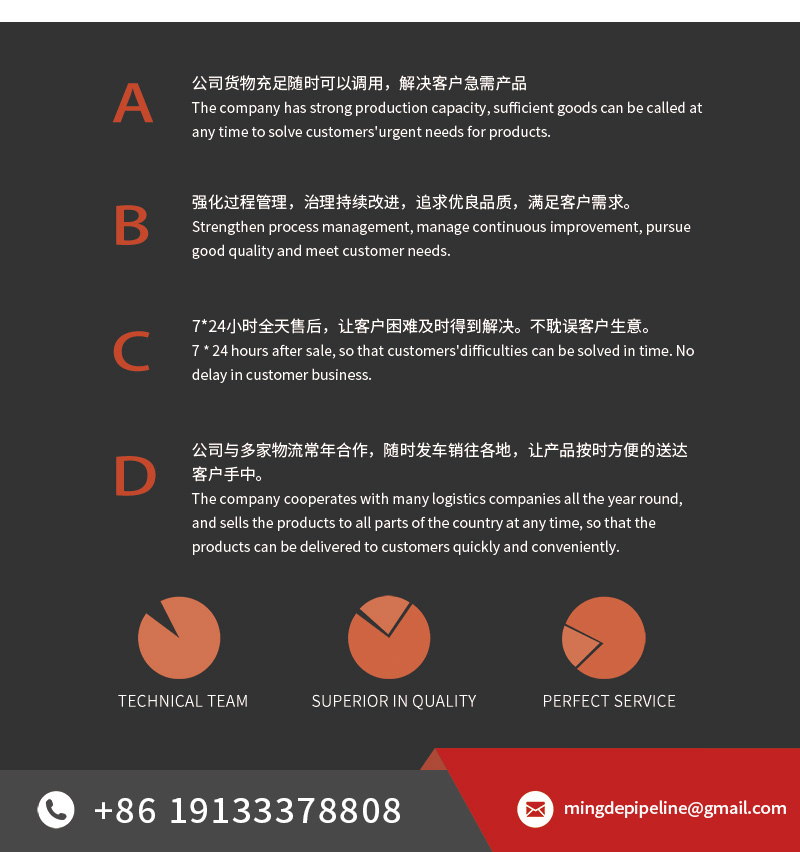
Large diameter flange

Large diameter flanges are critical components used in pipeline systems where exceptionally wide pipes are required for the transport of large volumes of fluid or gas. These flanges are engineered to connect pipes, valves, pumps, and other equipment in systems that demand secure, leak-proof connections at high flow capacities. Typically defined as flanges with diameters larger than standard sizes—often exceeding 24 inches—large diameter flanges are designed for strength, durability, and ease of installation in large-scale infrastructure and industrial projects.
Functional Importance
In systems where high-volume or high-capacity fluid handling is essential, large diameter flanges ensure efficient flow control and secure pipeline connections. Their size allows them to handle the increased stress and pressure that comes with the scale of these operations. Whether transporting water through municipal networks or crude oil through refineries, these flanges support the performance and reliability of the entire system.
Large diameter flanges are also vital in industries where downtime is costly and performance is critical. A solid, properly installed flange connection helps prevent leakage, maintain structural integrity, and extend the operational lifespan of the piping system.
Material and Manufacturing
Large diameter flanges are commonly made from robust materials such as carbon steel, stainless steel, and alloy steel, depending on the requirements of the application. The choice of material ensures that the flange can withstand high pressure, temperature variations, and corrosive environments.
Because of their size and mechanical load, these flanges are often manufactured using forging or rolling processes, followed by precise machining to ensure proper alignment and sealing surface finish. The integrity of the production process is especially important for large flanges, as even slight defects in sealing faces or bolt alignment can affect performance at this scale.
Common Applications
Large diameter flanges are used across a wide variety of industries, including:
Oil & Gas: Used in refineries, pipelines, offshore platforms, and processing facilities where large flow volumes are common.
Water and Wastewater Treatment: Essential in municipal water supply lines, drainage systems, desalination plants, and irrigation infrastructure.
Power Generation: Used in thermal and nuclear power plants for high-capacity steam, water, and gas transport lines.
Shipbuilding and Marine Engineering: Suitable for cooling systems, ballast systems, and exhaust piping in large vessels.
Chemical and Petrochemical: Applied in high-volume fluid transfer and processing systems that require resistance to chemical corrosion.
Mining and Bulk Material Handling: Used in slurry transport systems and other heavy-duty pipelines.
Key Advantages
High Flow Capacity
The primary advantage of large diameter flanges is their ability to handle significant volumes of fluids or gases with minimal flow resistance. This is crucial in operations where throughput is directly tied to productivity and efficiency.
Structural Strength
Due to their size and the mechanical forces they encounter, large diameter flanges are engineered for superior strength. Their robust construction enables them to withstand high internal pressure, vibration, and thermal expansion.
Customizable Design
Large diameter flanges can be custom-manufactured to meet specific project needs. Options include different face types (raised face, flat face, ring-type joint), pressure ratings, and drilling patterns to suit international standards like ASME, DIN, and JIS.
Ease of Maintenance and Replacement
These flanges are designed to allow for bolted connections, which means they can be disassembled when needed. This feature is especially useful for routine inspections, cleaning, or replacing parts of a pipeline without having to cut or weld.
Versatile Integration
Large diameter flanges can be used with a variety of pipe materials, including metal and composite pipes, and they work well with different types of gaskets and sealing materials to ensure leak-tight performance.
Design Considerations
When specifying or designing large diameter flanges, engineers must consider factors such as internal pressure, external loads, flange face design, material compatibility, and thermal cycling. Attention must also be paid to proper alignment, torque application during installation, and the condition of gaskets, as these elements directly affect sealing performance and system longevity.
In many cases, additional support mechanisms such as stiffeners, reinforcements, or flanged joints with internal linings may be required to ensure long-term durability in harsh operating environments.
Conclusion
Large diameter flanges are foundational components in high-capacity industrial piping systems. Their size, strength, and sealing reliability make them indispensable in sectors that rely on safe and efficient transport of large volumes of fluids or gases. With customizable designs, wide material choices, and broad applicability, large diameter flanges offer both functional performance and operational flexibility.
Whether deployed in a sprawling petrochemical plant, a municipal water supply network, or an offshore energy platform, large diameter flanges play a vital role in connecting and securing the systems that keep industries and cities moving forward.

 NEWS
NEWS
-
Thermal Stress Management with Advanced Pipe Insulation Brackets
2025-11-21 07:46:59
-
Custom Pipe Clamp Solutions for Complex Industrial Applications
2025-11-20 06:58:48
-
Modular Pipe Support Systems: Benefits for Modern Facilities Meta Description
2025-11-19 02:23:52
-
Corrosion-Resistant Brackets for Harsh Environments
2025-11-13 04:04:56
 Contact us
Contact us
Mobile:+86 19133378808
Email:mingdepipeline@gmail.com
Website:https://www.mingdepipe.com
Address:Zhenggang Industrial Park, Yanshan County Economic Development Zone, Cangzhou City, Hebei Province




